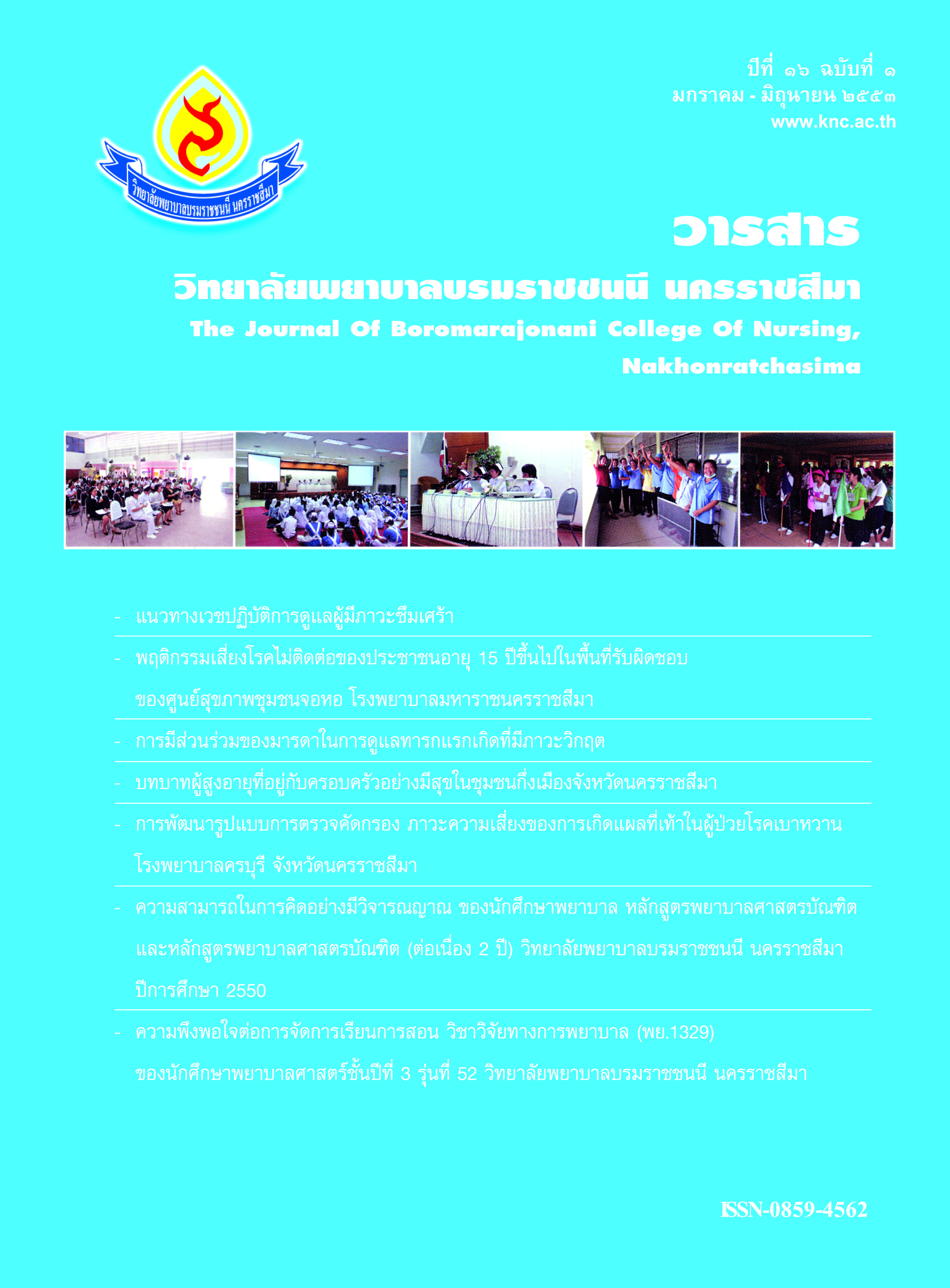แนวทางเวชปฏิบัติการดูแลผู้มีภาวะซึมเศร้า
คำสำคัญ:
โรคซึมเศร้า, เวชปฏิบัติ, primary care, major depressive disorderบทคัดย่อ
บทคัดย่อ
โรคซึมเศร้าเป็นความผิดปกติทางจิตเวชที่พบได้บ่อย และผู้ป่วยจะได้รับผลกระทบจากอาการซึมเศร้าอย่างมาก อย่างไรก็ตามโรคนี้ก็สามารถรักษาให้หายได้หากผู้ป่วยได้รับการดูแลอย่างเหมาะสม บทความนี้เป็นการนำเสนอแนวทางในการดูแลรักษาผู้ป่วยโรคซึมเศร้าในสถานบริการปฐมภูมิ เพื่อช่วยในการค้นหาและให้การรักษาผู้ป่วยในระยะแรกเริ่มได้ทันท่วงที บทความนี้ได้ทบทวนสาเหตุของโรคซึมเศร้าซึ่งสัมพันธ์กับปัจจัยหลายประการ กลุ่มเสี่ยงที่สำคัญได้แก่ ผู้มีประวัติฆ่าตัวตาย มีโรคเรื้อรัง มารดาหลังคลอด ผู้ติดสุรา ยาเสพติด หรือผู้ป่วยจิตเวช ผู้ป่วยที่จัดว่าเป็นโรคซึมเศร้าก็ต่อเมื่อผู้ป่วยมีอารมณ์ซึมเศร้าอย่างมากร่วมกับมีอาการอื่นๆ อย่างน้อย 4 อาการ เช่น นอนไม่หลับ เบื่ออาหาร เป็นต้น แต่ทั้งนี้ต้องวินิจฉัยแยกจากโรคอื่นๆ ด้วย เช่น Dysthymic disorder หรือโรคของระบบประสาทส่วนกลาง เป็นต้น หลักในการรักษาผู้ป่วยโรคซึมเศร้าที่เหมาะสมในการดูแลในระดับปฐมภูมิ คือให้การดูแลด้านจิตใจเบื้องต้นและการรักษาด้วยยาซึ่งการรักษาด้วยยานี้แบ่งเป็น 3 ระยะ คือ การรักษาในระยะเฉียบพลัน การรักษาระยะต่อเนื่อง และการรักษาระยะยาว การเลือกใช้ยาในผู้ป่วยซึมเศร้าต้องใช้ความระมัดระวัง เพราะยาแต่ละตัวมีฤทธิ์ข้างเคียงแตกต่างกัน การดูแลผู้ป่วยโรคซึมเศร้าเป็นบทบาทของทุกฝ่ายที่ต้องร่วมมือกัน ทั้งผู้ป่วยเอง ครอบครัว และบุคลากรสาธารณสุข
คำสำคัญ : โรคซึมเศร้า, เวชปฏิบัติ
Abstract
Major depressive disorder (MDD) is one of the most-frequently-seen psychiatric disorders. Persons with MDD are affected by its clinical conditions. However, it can be cured if the person with MDD gets appropriate treatment. This article aims to present clinical practice guidelines for treating persons with MDD in primary care settings. These guidelines will allow health care providers to perform initial screening for early detection of MDD, so they can promptly care for the patients. The authors have review causes of MDD, which are related to many factors. The most at risk groups are persons with history of attempted suicide, persons with chronic illnesses, postpartum women, alcoholics, drug addicts, and persons with psychiatric conditions. A person will be diagnosed with MDD if he or she has a depressive emotion with at least four others conditions such as sleeplessness ,loss of appetite, etc. The providers need to distinguish MDD from other conditions such as dysthymic disorder and illnesses of the central nervous systems. The main treatments for persons with MDD in primary care settings are supportive care and pharmacotherapy. Pharmacotherapy is divided into three phases, namely acute, continuation, and prophylactic treatments. The health care providers should carefully use medications for persons with MDD because of different side effectsCaring for persons with MDD is a responsibility of all parties involved, including the patient, their families, and health care providers.
Keywords : primary care, major depressive disorder
ดาวน์โหลด
ฉบับ
ประเภทบทความ
สัญญาอนุญาต
บทความที่ได้รับการตีพิมพ์เป็นลิขสิทธิ์ของ วารสารสุขภาพและการศึกษาพยาบาล ซึ่งดำเนินการโดยวิทยาลัยพยาบาลบรมราชชนนี นครราชสีมา
ข้อความที่ปรากฏในบทความในวารสารเล่มนี้เป็นความคิดเห็นส่วนตัวของผู้เขียนแต่ละท่านไม่เกี่ยวข้องกับกองบรรณาธิการวารสารสุขภาพและการศึกษาพยาบาล หรือวิทยาลัยพยาบาลบรมราชชนนี นครราชสีมา แต่อย่างใด ความรับผิดชอบองค์ประกอบทั้งหมดของบทความแต่ละเรื่องเป็นของผู้เขียนแต่ละท่าน หากมีความผิดพลาดใดๆ ผู้เขียนแต่ละท่านจะรับผิดชอบบทความของตนเองแต่ผู้เดียว







